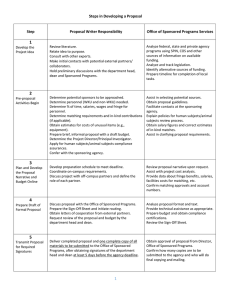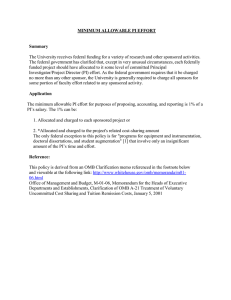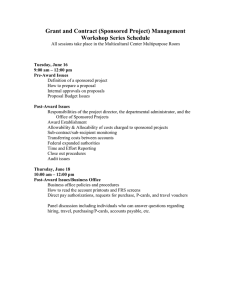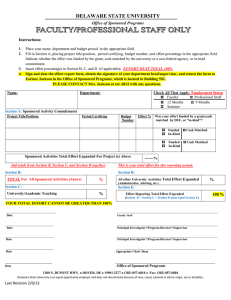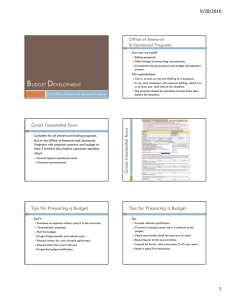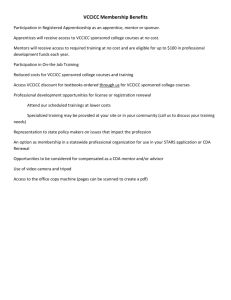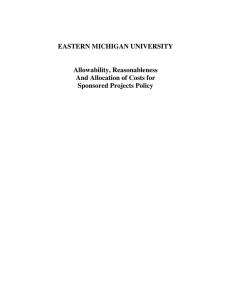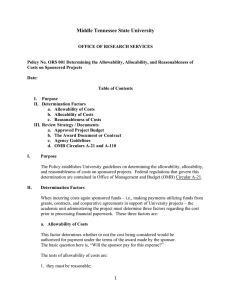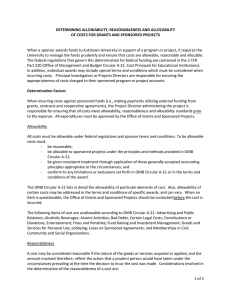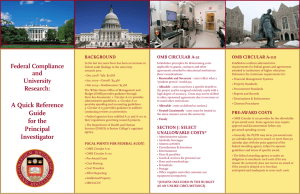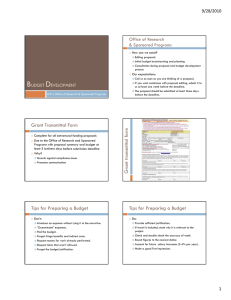University of South Alabama Office of Sponsored Programs Basic Budget Terminology
advertisement
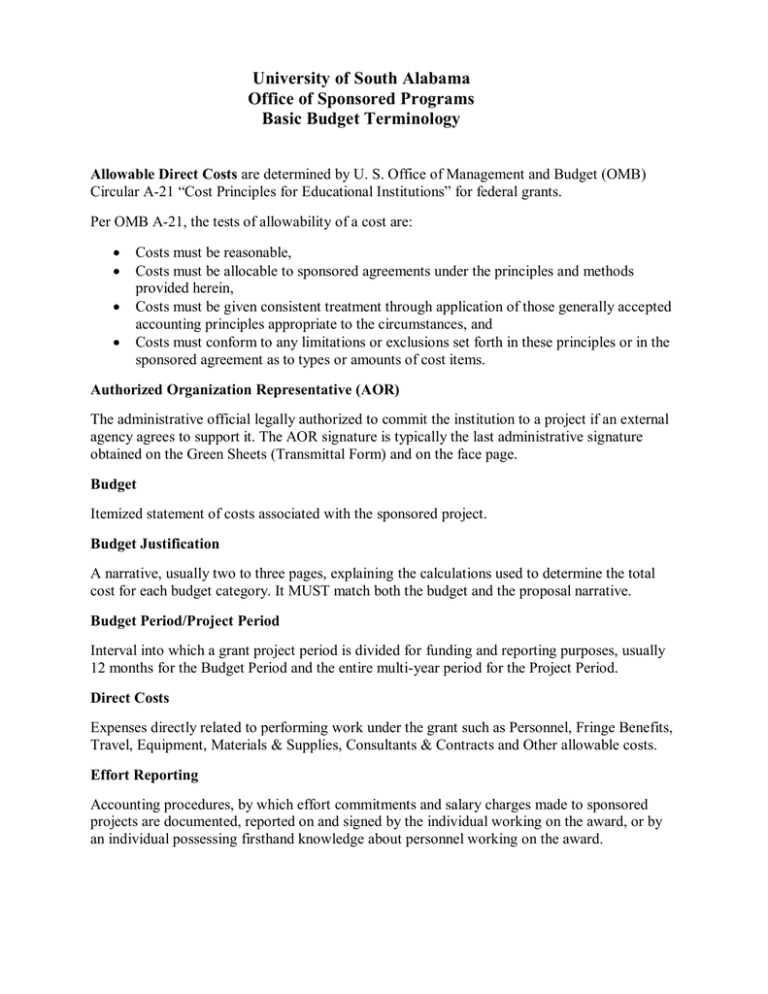
University of South Alabama Office of Sponsored Programs Basic Budget Terminology Allowable Direct Costs are determined by U. S. Office of Management and Budget (OMB) Circular A-21 “Cost Principles for Educational Institutions” for federal grants. Per OMB A-21, the tests of allowability of a cost are: Costs must be reasonable, Costs must be allocable to sponsored agreements under the principles and methods provided herein, Costs must be given consistent treatment through application of those generally accepted accounting principles appropriate to the circumstances, and Costs must conform to any limitations or exclusions set forth in these principles or in the sponsored agreement as to types or amounts of cost items. Authorized Organization Representative (AOR) The administrative official legally authorized to commit the institution to a project if an external agency agrees to support it. The AOR signature is typically the last administrative signature obtained on the Green Sheets (Transmittal Form) and on the face page. Budget Itemized statement of costs associated with the sponsored project. Budget Justification A narrative, usually two to three pages, explaining the calculations used to determine the total cost for each budget category. It MUST match both the budget and the proposal narrative. Budget Period/Project Period Interval into which a grant project period is divided for funding and reporting purposes, usually 12 months for the Budget Period and the entire multi-year period for the Project Period. Direct Costs Expenses directly related to performing work under the grant such as Personnel, Fringe Benefits, Travel, Equipment, Materials & Supplies, Consultants & Contracts and Other allowable costs. Effort Reporting Accounting procedures, by which effort commitments and salary charges made to sponsored projects are documented, reported on and signed by the individual working on the award, or by an individual possessing firsthand knowledge about personnel working on the award. Face Page/Budget Forms Forms used by the funding agency to provide information on the proposal, institution, and budget. Facilities and Administrative Costs (F&A) Costs that are incurred for common or joint objectives and, therefore, cannot be identified readily and specifically with a particular sponsored project, an instructional activity, or any other institutional activity. For example: departmental administration, general administration, library costs, buildings, utility, and maintenance costs. Also known as Indirect Costs or Overhead. Fringe Benefits Fringe benefits (FB) are employee benefit costs such as health/dental insurance, pension plan and workman’s compensation expenses paid for by the employer. Green Sheets/University Transmittal Form The university internal form used to ensure mutual understanding and agreement about the proposed sponsored project among PI, Chair, Dean, and Senior University. Indirect Costs Another name for Facilities & Administrative Costs (F&A) In-Kind In-Kind contributions mean the value of non-cash contributions. In-kind contributions may be in the form of real property, equipment, supplies and other expendable property, and the value of goods and services directly benefiting and specifically identifiable to the project or program. Matching or Cost Sharing Matching or cost sharing by the institution may be required by law, regulation, or administrative decision. Costs used to satisfy matching requirements are subject to the same policies governing allowability as other costs under the approved budget. Release Time Percentage of time included in the budget for a faculty member to buy out their time from a portion of their teaching load.
